The first season of a show can often have a rather tragic quality to it. Many shows fail to live past their first season, and, as such, it isn’t uncommon for the first season to feel like a desperate scramble for the show to find its footing and hit its stride. Furthermore, even when a series does succeed on that front that does not guarantee that it will survive the renewal process, as shows like Firefly and Awake can attest. So, is Constantine‘s first season good? It’s not an easy question to answer. Based on the long lived Vertigo series Hellblazer, this is the second live action adaptation of the comic after a 2005 film starring Keanu Reeves. The series follows British exorcist John Constantine as he battles demonic forces, confronts his own damnation, and attempts to combat a mysterious strengthening of dark forces referred to as the Rising Darkness. It might not be surprising to discover that the show itself suffers from a number of tonal problems. It never quite succeeds at horror or comedy, and the visual aesthetic often feels cheap. Ironically, the show could probably benefit from learning a couple lessons from the first five seasons of Supernatural, a show that was itself heavily influenced by Hellblazer. But first, it might be most productive to look at what the show does right.
The actors who portray our main characters all do rather admirable jobs. Cracks in his accent aside, Matt Ryan makes for an interesting rendition of John Constantine even if I do think the show should emphasize his sense of irreverence a bit more. Though even on that front, Constantine is still leaps and bounds ahead of its film counterpart, and, even if the constant weight that John Constantine seems to bear does get grating at points, there are moments where it does succeed in striking a genuine emotional chord, such as when the psychic Zed informed John that his mother didn’t blame him for her death. Speaking of Zed, as a sidekick she seems preferable to the character of Liv who was introduced in the pilot episode, Non Est Asylum, but was written out in a scene at the end in order to make way for Zed’s character. To me, Liv never seemed to have much in the way of agency, though I admit that I only had a single episode to get to know her. Zed, on the other hand, does have her own agendas and goals, and will commonly work in parallel with or even against John. This helps in establishing her as her own character, but, like with Liv, there is still a sense that the show just uses her powers as a form of magical GPS to point the characters in the right direction whenever they get stuck, or as a way to quickly offer a bit of cryptic hinting for the sake of developing a sense of intrigue. Angélica Celaya does an okay job with her character, but it’s still a little difficult to view her as much more than a plot device. Then, we have Chaz, who is played by Charles Halford. Like Zed, he has his own sense of purpose and agency as well as a basis in the Hellblazer comics, but it can be difficult to justify his presence in the show. He sometimes serves as the muscle for the group, and occasionally John will confide in him, but he doesn’t actually do much to serve the narrative. I ultimately found John to be most engaging in episodes like A Whole World Out There and Angels and Ministers of Grace where he is largely working independently of Zed and Chaz, so it may have ultimately been wiser to restrict Zed and Chaz to the role of recurring characters, and let Matt Ryan run with the role without being shackled to his own personal Scooby Squad. Finally, we have the angel Manny, played by Harold Perrineau, who ostensibly serves a form of heavenly guide for John. I say ostensibly because most of the time he is restricted to oblique ramblings that tend to be more irritating than they are informative. On rare occasions the show will use him as a rather literal Deus ex Machina, but those are probably the moments where Manny is at his most interesting, since he is actually influencing the plot. His character remains one of the more peculiar, and is difficult to judge based solely on this first season. The biggest problem with the cast is that none of the main characters succeed at selling a sense of horror. With John, it is somewhat understandable that he would be less likely to balk in the face of arcane horrors, but both Chaz and Zed also feel detached from the atrocities going on around them. At one point in the Saint of Last Resorts two-parter, the pair of them discuss demonic possession and the possibility of being forced to kill Constantine with all the concern and fear that one might expect from a discussion about pizza toppings.
This ties back to my complaint about the tone. Constantine needs a greater sense of subtlety in order to work as a serialized horror. Often the visual effects and dialogue end up feeling cheesy or silly. Now being silly isn’t an inherently bad thing. Plenty of horror properties rely on the fact that, during periods where they aren’t being scary, they can fall back on the silliness of their premise for entertainment. But while Constantine does rely occasionally on some comedic writing, there aren’t any episodes that try to intentionally use the show’s over the top nature to its benefit. If the show wishes to improve its visual style it should probably try for less blatant creature designs and try and improve its use of shadows and contrast. The sets and locations also tend to feel shockingly cheap which tends to break immersion with a sledgehammer. This is particularly notable in the episodes Danse Vaudou and The Saint of Last Resorts two-parter which supposedly take place in New Orleans and Mexico respectively, but it couldn’t have been less believable had they claimed to be on Mars. In the case of Danse Vaudou, I suspect that the productions staff simply tried to find the most New Orleans looking street Georgia and then filmed every exterior shot either on that particular street or on a street out in the middle of the woods. Fortunately, when the show “returns” to New Orleans for the season finale, Waiting for the Man, they at least do a slightly better job of making it appear as if the cast was actually there, even if laughable accents still run rampant. The same can not be said for The Saint of Last Resorts, as at no point could I accept the idea that the episodes were actually taking place in Mexico. It strains at immersion when we, the viewers, are expected to believe that John is being locked up in a Mexican prison rather than what appears to be an abandoned middle school with chain link fence around it. It’s good that as the show goes on its visuals do improve some, but the writing itself remains rather uneven.
As I was watching the finale, it kept occurring to me that the creepiness of the concept was constantly being undermined by the writing. The episode in question, Waiting for the Man, follows John and Zed in “New Orleans” as they investigate a number of missing persons cases involving young girls. You see, a satanist has been gathering them together as his undead wives. This is a pretty disturbing concept, but it’s constantly being subverted by the latest abductee’s completely inhuman response to everything around her. Her response to a group of creepy girls dressed in white (SUBTLE!) telling her that she is going to be marrying “the Man” isn’t fear but rather an odd combination of joy and unease. Perhaps she is enchanted, but later she gets cold feet when getting married before Satan, so who knows. Furthermore, any time the episode starts to build tension, the Man ends up saying something in his ludicrous Cajun accent that pushes it from unnerving to laughable. (“What yo name is, boo?”) The supposed Big Bad of the show is also a bit peculiar. John and Manny continuously refer to the Rising Darkness to describe many of the peculiar supernatural occurrences that have been popping up as of late, but it is such a vague statement that it doesn’t really have much of a meaning. It also doesn’t help that the term only gets cheesier each time a character uses it. I had considered swapping out the “Rising Darkness” for other terms throughout this review, such as the “Encroaching Shadows,” but, honestly, I actually think that sounds better than the “Rising Darkness,” so that probably would have undermined the joke. It is eventually revealed that the Rising Darkness is being caused by the Brujeria, ancient magical creatures that were cast into hell by God. The problem is that until roughly the last minute of this first season, the Brujeria is just a name with no face to equate it with. They have no real sense of presence in the show, and John might as well be talking about boogeymen or garden gnomes for all the presence that the group has. The only recurring antagonist that the show provides is Papa Midnite and… actually I have very few complaints on that front. Michael James Shaw has a very sparse filmography, but he is a ton of fun as the aforementioned voodoo priest who has a personal vendetta against John Constantine. His introduction practically makes the episode The Devil’s Vinyl what it is.
Constantine is a very uneven show. Even within a single episode the quality can vary wildly from scene to scene. The best episodes are probably The Devil’s Vinyl, in which John and Zed attempt to track down a record that bears the voice of the First of the Fallen upon it, and A Whole World Out There, where John and his friend Ritchie Simpson attempt to save a number of Ritchie’s students who became trapped in another realm. Both of these episodes definitely have their problems, but by and large succeed in preventing those problems from detracting too much from the proceedings. As for notably crappy episodes, The Darkness Beneath is notable for having rather underwhelming enemies and a rather underwhelming location and Danse Vaudou is notable for similar reasons.
Before I wrap up, a few Notes and Nitpicks:
- MediaWhorz did a review of the 2005 Constantine film which can be found here.
- John Constantine actor, Matt Ryan is probably most notable for his role as Edward Kenway in Assassin’s Creed IV: Black Flag.
- Mark Margolis actually appeared in the episode Quid Pro Quo as the DC sorcerer Felix Faust. It’s a shame that the show didn’t make him a primary villain. For those who are unfamiliar, Margolis has appeared in many films and TV roles, perhaps most notably as the wheelchair-bound Hector Salamanca in Breaking Bad, though he has also appeared in Gone Baby Gone, Oz, Requiem for a Dream, Black Swan, Person of Interest, and The Wrestler.
- The show tries to make a mystery out of why Chaz is immortal, but, when the show does finally pull back the curtain on that particular mystery, there really isn’t any reason for not revealing the information earlier.
- The show does have fun introducing or making references to lesser known mystical characters from the DC Universe like Jim Corrigan (aka The Spectre), Doctor Mist, or even Dr. Fate.
- It took the show a little while, but it would appear that Constantine got over its hangups about showing John smoke.
So, I suppose the question of the hour is “Does Constantine deserve a second season?” As a moderate fan of the Hellblazer comics (I’ve currently got the trade copy of Original Sins within arm’s reach), I’d like to see the show succeed, but even the season finale is rife with problems. If the show were to continue, it needs to aim for a more subtle approach and may actually benefit from having its budget cut some in order to encourage less special effects. As it stands, anyone who is particularly interested in the DC Universe or is a fan of a certain ‘sorry sod’ may find sufficient cause to check out Constantine, but beyond that I can’t quite give a full on recommendation.

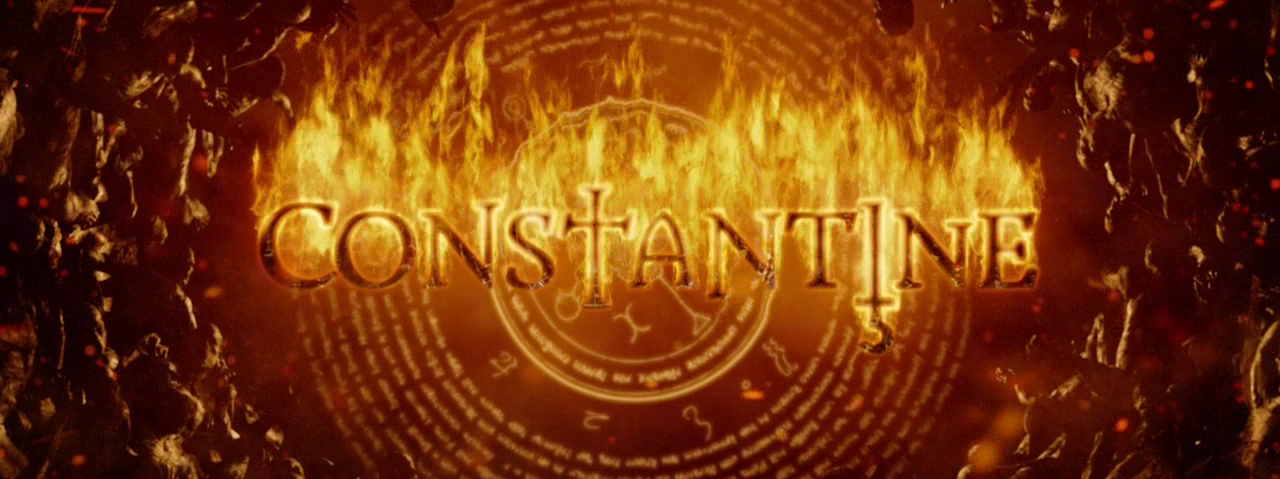
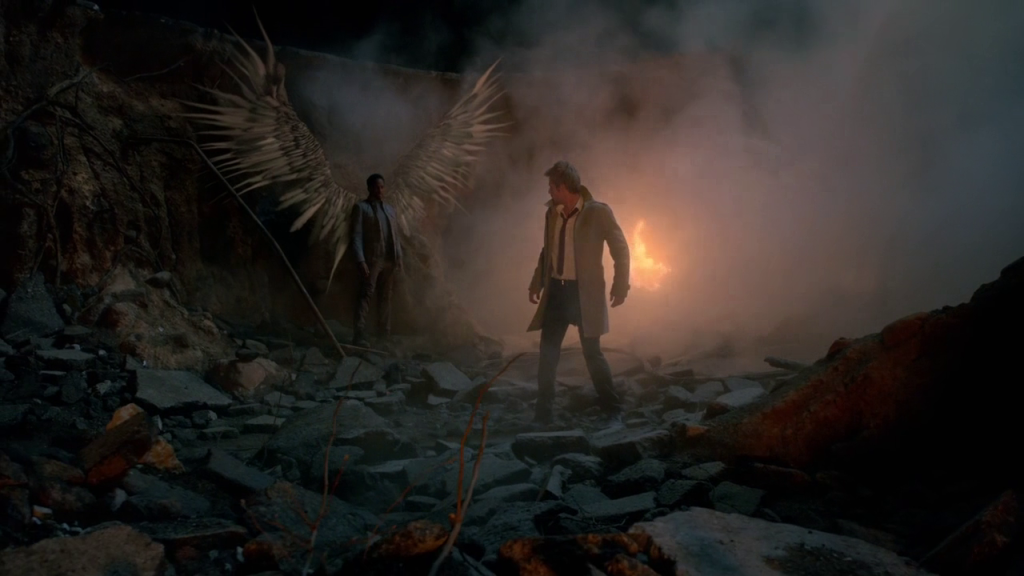
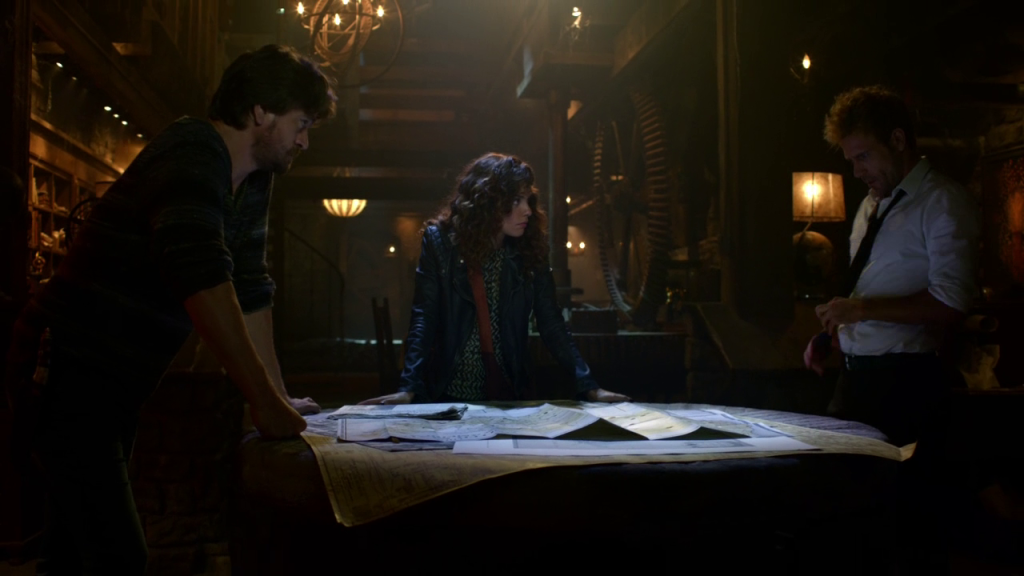
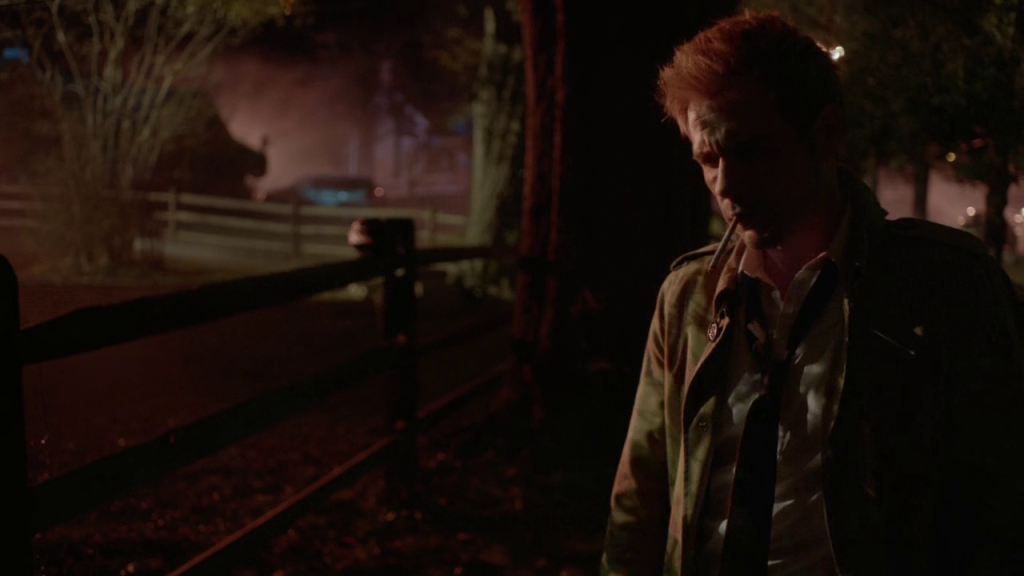
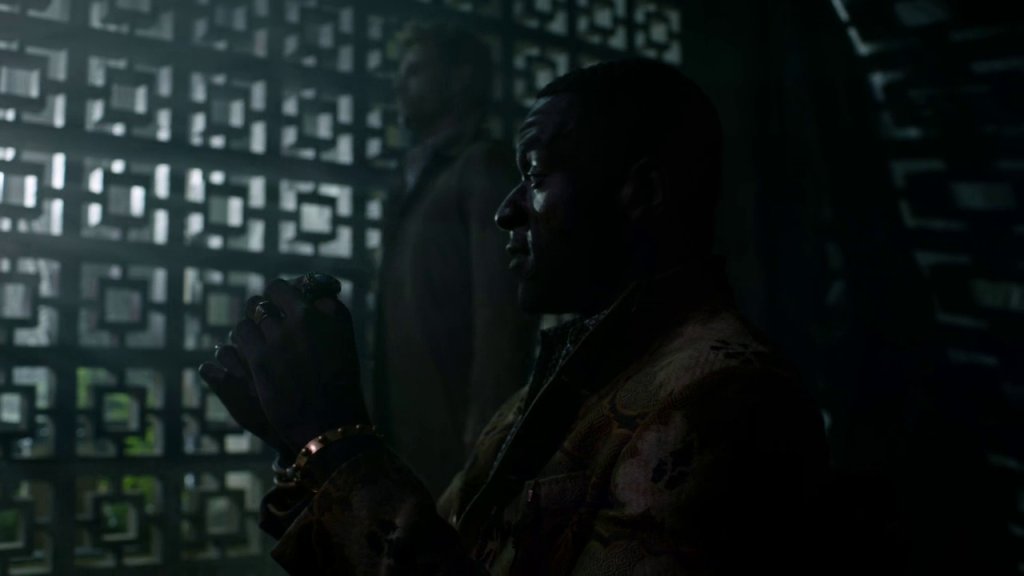
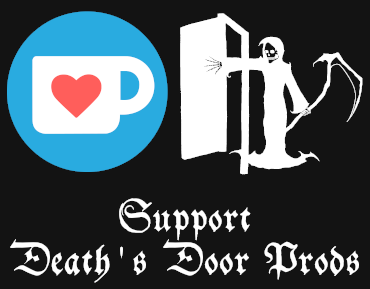

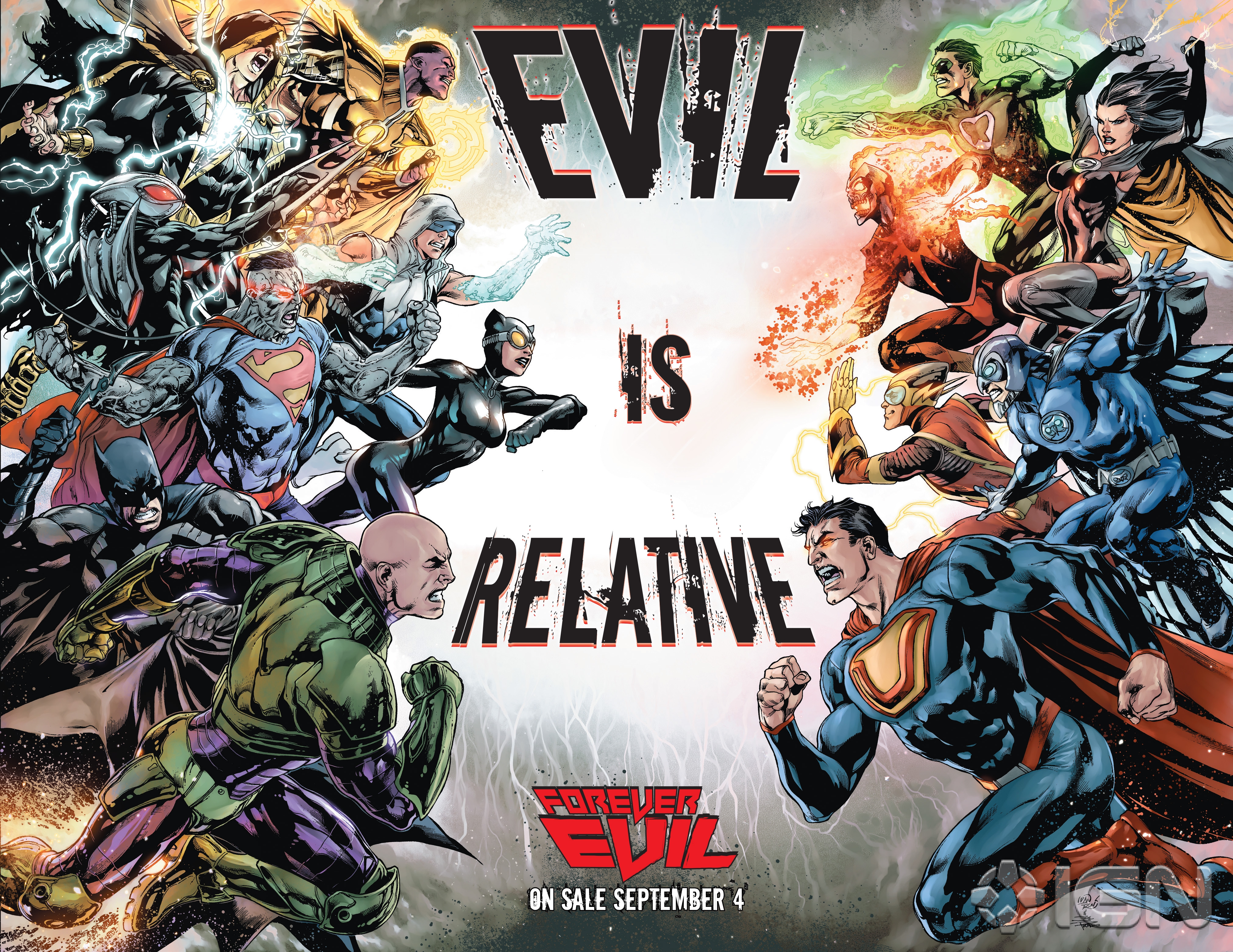
Add comment